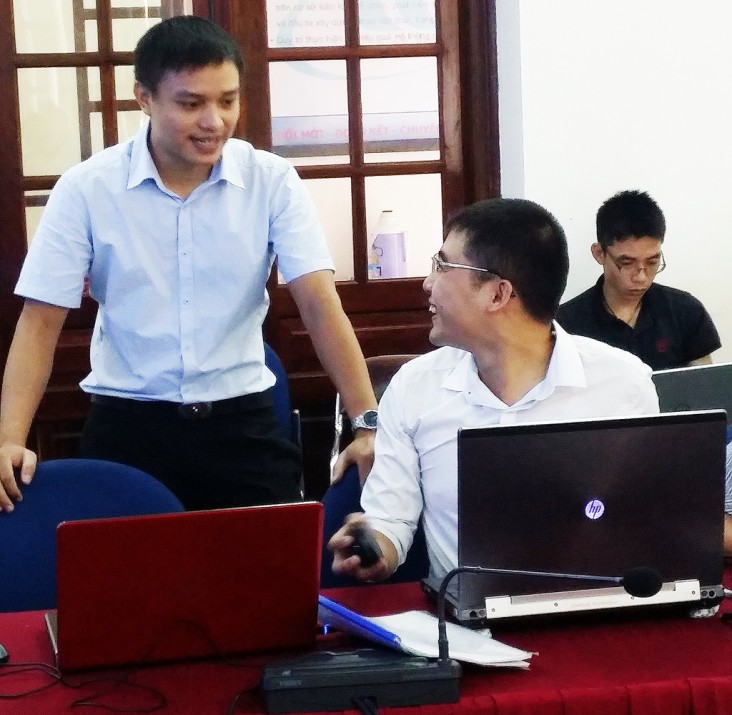
October 2017—Vu Huu Long was always curious why the world behaved the way it did. Science offered a means of answering his questions.
“I chose this field because it helps me understand the world around me. Most importantly, I can use this understanding to help people in my country,” said Long.
In 2010, Long graduated from the Hanoi University of Mining and Geology and began working with the Space Technology Institute, part of the Vietnam Academy of Science and Technology, in 2012.
Vietnam, like other countries in the Mekong region of Southeast Asia, is confronted with water-related challenges. Flooding in the rainy season and drought in the dry season leave millions vulnerable. Rapid urbanization and population growth put increasing pressure on the environment.
Managing resources and planning for weather-related shocks is the focus of Long’s work. He uses satellite imagery and field data to better understand risks and to forecast trends to inform decision-making. But this work is not easy.
Environmental management needs big-picture thinking. It requires the use of satellite imagery and big data. However, obtaining this data either requires high-performance technology or is time-consuming and expensive, as expressed by Luong Tuan Trung, a researcher at the Vietnam Academy for Water Resources.
“I face many challenges with accessing satellite imagery,” said Trung. “The processing power needed is immense; we lack the computational resources. Storage capacity also limits us to access high-quality data. Using commercial software can be expensive and with different codes, difficult to understand.”
In 2016, Long was introduced to Google Earth Engine (GEE) through SERVIR-Mekong, a program funded by USAID in cooperation with NASA, and implemented by the Asian Disaster Preparedness Center. GEE, which is a catalog of satellite imagery and datasets with analysis capabilities, is also a game changer for Long and his colleagues at the academy. SERVIR-Mekong teamed up with Google to reach government ministries in the region with this new technology.
Technical challenges once faced by Long and his colleagues have greatly improved with GEE. They can now perform analysis faster and more accurately predict trends. As a result, reservoir monitoring, flood mapping, crop detection and many other projects now use GEE.
“As GEE becomes more popular, it will improve decision-making with faster information and more accurate analysis,” said Long.
Demand for the platform has exceeded expectations. Across the region, government ministries and development practitioners are seeking GEE for their work, and meeting demand has been a challenge. SERVIR-Mekong is now developing online courses via edX to allow more people to use the platform.
The SERVIR-Mekong program, which runs from 2014 to 2019, helps government and other stakeholders in the Lower Mekong use publicly available satellite imagery and technologies to address development issues such as disaster impact and environmental changes.
LINKS
Follow @USAIDAsia, on Facebook, on Flickr, on YouTube







Comment
Make a general inquiry or suggest an improvement.